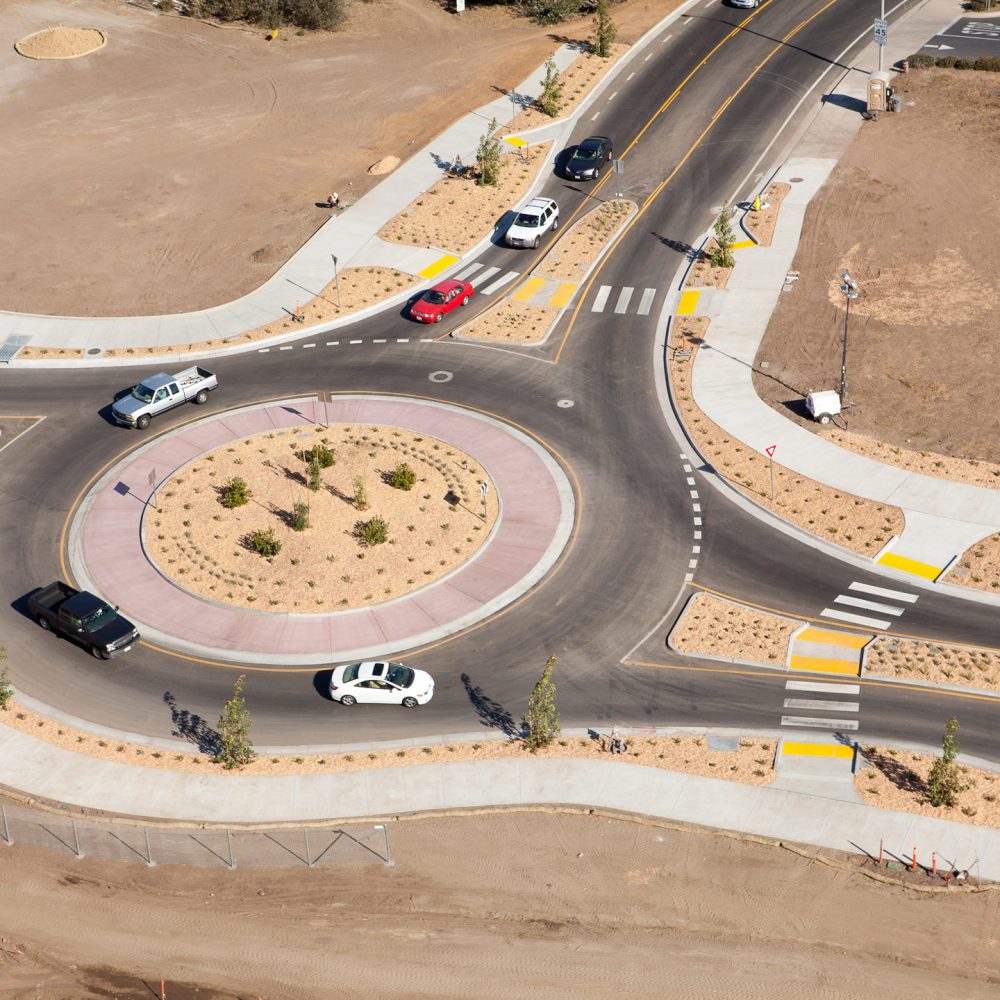
Here’s What You Need To Know
Look for a new type of intersection popping up around the City—the roundabout. A roundabout is a one-way circular intersection (without traffic signals) that flows around a center island. The intersection of Los Carneros Road and Calle Real will be receiving an upgrade this spring with a single-lane roundabout. And four additional roundabouts are being considered for Old Town Goleta as part of the Ekwill-Fowler Road Extensions Project.
Although roundabouts are not appropriate for all intersections, they will provide our community with another tool to address traffic congestion and to further enhance the safety of our roads. Before your head starts spinning over roundabouts, let’s look at WHY the City is moving in this direction and HOW roundabouts improve safety and traffic flow.
Why Go the Roundabout Route?
Safety. According to the Federal Highway Administration,installing a roundabout typically results in a 76% reduction in injury accidents, a 90% reduction in fatalities, and a 40% reduction in pedestrian injuries. Why? There are 75% fewer points of conflict between vehicles as compared to a standard intersection.
Less Delays. Roundabouts are designed to handle traffic more efficiently than signalized intersections. With traffic constantly moving and vehicles entering the intersection at lower speeds, more vehicles are able to move through the intersection at any given time.
Less Environmental Impact. Since roundabouts reduce the amount of time vehicles spend idling at intersections, they reduce fuel consumption and exhaust emissions. Roundabouts do not require signals, and this reduces electricity consumption.
Much different from the “traffic circles” of years ago, the modern roundabouts you’ll see around the City will provide safe and efficient traffic flow. The National Institute for Highway Safety is a proponent of roundabouts because statistics prove that they are much safer than traditional intersections. Although changes like these can be hard to get used to—this change will keep you and your loved ones safer while driving,walking or riding within our lovely City.
USING THE ROUNDABOUT: QUICK TIPS
Roundabouts are easy to use if you pay attention to signs and ground markings. Some quick tips to remember are:
Slow down: Driving speeds in roundabouts are usually 12-25 mph.
Choose the correct lane: If you are entering a multi-lane roundabout,use the outside lane if you will be making a right turn or going straight. Use the left lane to make left-turns, U-turns or straight-ahead movements.
No passing: Never pass or overtake another vehicle after entering a roundabout.
Yield: When preparing to enter a roundabout, yield to all traffic already circulating within the roundabout.
Pedestrians and cyclists: Pedestrians must cross in the designated crosswalks. These crosswalks require pedestrians to cross a shorter distance and allow for a refuge at every crossing. The slower speeds of vehicles in a roundabout mean greater safety for pedestrians. Cyclists are required to walk their bikes if they cross in the crosswalks. Roundabouts are usually designed with Class I bike/pedestrian paths for sidewalks which can be used by bicyclists who wish to do so. Experienced bicyclists, however,usually use the roundabout with other vehicles given the slower speeds.


